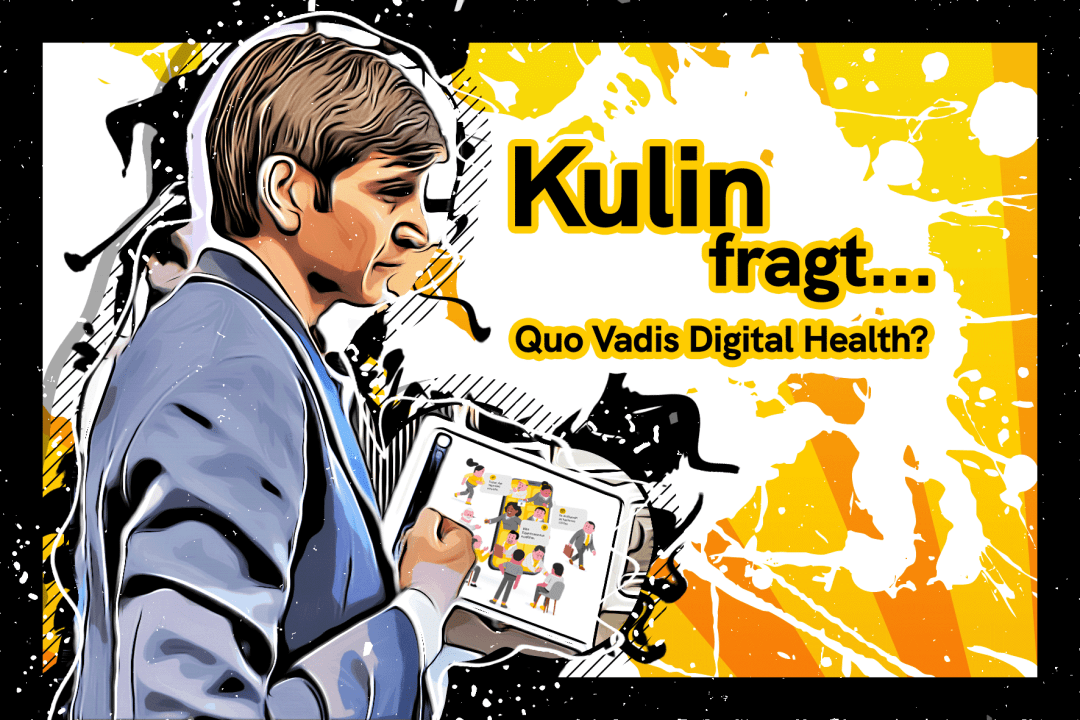This phrase from financial jargon currently fits hardly any industry better than the healthcare sector. More and more investors and also companies from outside the sector are recognizing its market potential – especially that of digital health. The investment sums represent the degree of maturity that the industry has now reached.
When analysts or financial experts talk about the “music” that is in a company or an industry, they usually mean potential and price fantasies. After all, wherever investors see future opportunities – private and professional investors alike – they invest. And the maturity of an industry can also be gauged from these investment flows. Most investors dream of being part of the next big coup at a very early stage. But the risk that an idea will not be as successful or feasible as they had hoped is too high for most. That’s why only a few, mostly professional investors get involved in an industry in the early stages of development. Only with increasing professionalization do more investors dare to come out of the woodwork. Conversely, the more capital that flows into a company or an industry, the more established both are.
So if we follow the capital here and now, some interesting conclusions can be drawn for the digital healthcare industry. Let’s start with a look across the Atlantic, where Digital Health is already much more established than in this country and offers correspondingly different prospects for investors. In a recent market commentary, for example, Bellevue Asset Management, an asset manager specializing in healthcare investments, is convinced that the signs are good this year. In particular, the involvement of large healthcare companies in disruptive, fast-growing digital health providers is seen as positive. The best example: Stryker, one of the global market leaders in medical technology, acquired the leading U.S. company for communications software and hardware for hospitals in February of this year. Vocera’s innovative strength and complementary products were particularly convincing, emphasizes Stryker CEO Kevin Lobo: “The acquisitions offer significant opportunities to drive innovation and further accelerate our digital efforts.” He added that the company warmly welcomes Vocera and looks forward to working together to provide patients with safe care in the future. Oracle’s acquisition of Cerner at the turn of the year is also expected to draw greater interest in healthcare. Oracle has let itself cost 28.3 billion U.S. dollars the commitment – the largest takeover so far in the company’s history and with the health sector of all things “industry foreign”.
But in Europe, too, one finds oneself on exciting tracks if one follows the money in the direction of healthcare. Admittedly, the idea of ordering a doctor via Uber app may sound completely suspect at first. But on closer inspection, it’s not at all unwise to follow Uber Eats and apply the “delivery service” to other areas of daily need. Uber is currently launching its first pilot in Portugal. According to reports in Portugal News, customers will be able to order a health expert directly to their home or book a consultation via telephone and video. For the new service, Uber is partnering with Lisbon-based Ecco Salva Medical Services, which offers a range of services from medical assistance to telemedicine, occupational medicine and patient transport. And if you think these are Uber’s first steps into the healthcare sector, you’d be wrong. The announcement early last year of a partnership with ScriptDrop, a medication delivery service, is just one example of the potential the executive obviously sees in healthcare.
When capital is so stringently drawn towards the healthcare sector, the first companies in this country are also daring to open up to the capital market. Curtain up for Noventi. First, Germany’s largest supplier of enterprise resource planning systems – which now has 27 subsidiaries and holdings – was transformed into a European stock corporation, SE. Now it wants to raise up to 80 million euros via profit participation certificates. This is a security that has the characteristics of both bonds and shares. The advantage for the issuing company: The scope for structuring such a security is immense, hardly regulated, one avoids bringing financial investors directly into the company or granting voting rights. Noventi intends to use the capital raised primarily to cover the Group’s financing needs. Because the “purchases” of the past have left financial traces, which must now be compensated with fresh capital, as the magazine Apotheke Adhoc analyzes in a report.
What the three examples have in common: Those who follow the money are increasingly encountering the healthcare sector these days, and the digital healthcare sector in particular. Many of the pioneers there are still in early financing phases, but even near-term IPOs cannot be completely ruled out. So if you follow the money, you can’t deny that digital health is now gaining maturity in many areas. And with the KHZG funding, billions are also flowing into the sector from other directions over the next few years. If these are not arguments that we have ushered in 2022 as the year of the digital health industry – or better, the decade?

